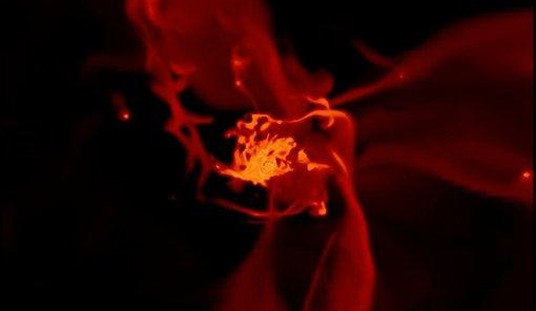Sometimes a phrase catches one’s eye, for example the beginning of a recipe in Mrs Beeton’s Victorian cookbook: “Take a dozen eggs…” In like manner, a phrase in a paper in a recent edition of the New England Journal of Medicine caught my eye: “Five obese rhesus monkeys…” Perhaps they – the monkeys – had been following Mrs Beeton’s directions too closely.
The phrase that caught my eye was in the middle of an interesting paper about the genetics and biochemistry of coronary artery disease. Although the disease is in sharp decline throughout the western world for reasons yet to be fully explained, it remains a major cause of death, and therefore research into its causes, prevention and treatment remains a high priority.
The researchers in this paper, which was refreshingly unusual in combining epidemiological with experimental work, attempted to show that a certain genetic mutation found in the human population (or at least the population of European descent) was statistically associated with a reduced level of triglycerides in the blood, which in turn was associated with a reduced risk of developing coronary artery disease. They then went on to show that the biochemical change in which the genetic mutation resulted could cause reduced levels of triglycerides in mice and the five fat monkeys mentioned above.
The authors first showed that 1,661 patients with the mutation that is believed to result in lower levels of triglycerides in the blood had a lower prevalence of coronary artery disease than 41,269 patients who did not have it. Their risk of the disease was 19 percent lower than that of those who did not have the mutation.
They also showed that those with the mutation also had lower levels of triglycerides in total, but higher levels of high-density lipoprotein (thought to be protective against coronary artery disease).
They then showed that only one in 811 patients with coronary artery disease (as proved by coronary arteriogram) had the mutation while one in 503 patients without the disease had it.
Statistical correlation does not by itself mean that two variables have a causal relationship in either direction (that a causes b or that b causes a). Intelligence and large feet are correlated, for example, but that does not prove that intelligent people think with their feet. That correlation does not mean causation is both elementary and constantly reiterated. It has to be reiterated because it is so often forgotten.
What is impressive about this paper, however, is that the authors, having shown a statistical relationship, went on by experimental means to attempt to demonstrate a causative relationship, something which is not often done. Taking overfed mice, and the said fat monkeys, they injected them with an antibody against the enzyme that is produced by the patients without the mutation but whose production is blocked by patients with it. In other words, they tried to reproduce the biochemical effect of the mutation by other means.
The authors found the antibody did indeed have the effect hoped for. A single injection of the antibody in four of the fat monkeys reduced their triglyceride levels by 60 percent in two days, and the effect lasted for four weeks. The effect was even more dramatic in the fifth fat monkey with a very high level of triglycerides to start with.
It is far too early to claim the study as an important clinical advance. It may yet prove to be a dead end. One little thing that I noticed was the word in which the deaths of the experimental animals were reported. They were euthanized; a few years ago they would have been sacrificed; and before that they would have been killed. What will the next euphemism be?









Join the conversation as a VIP Member